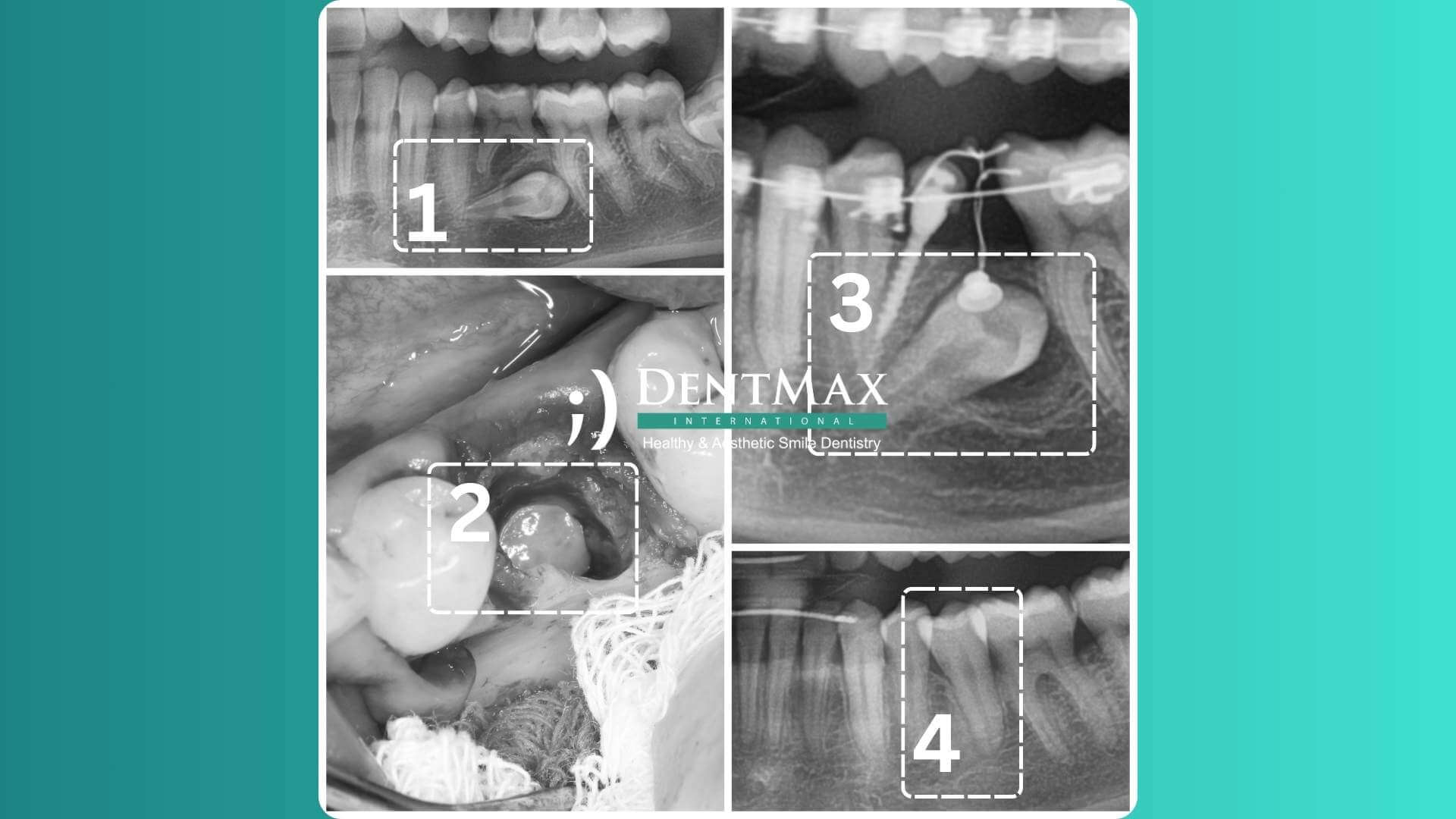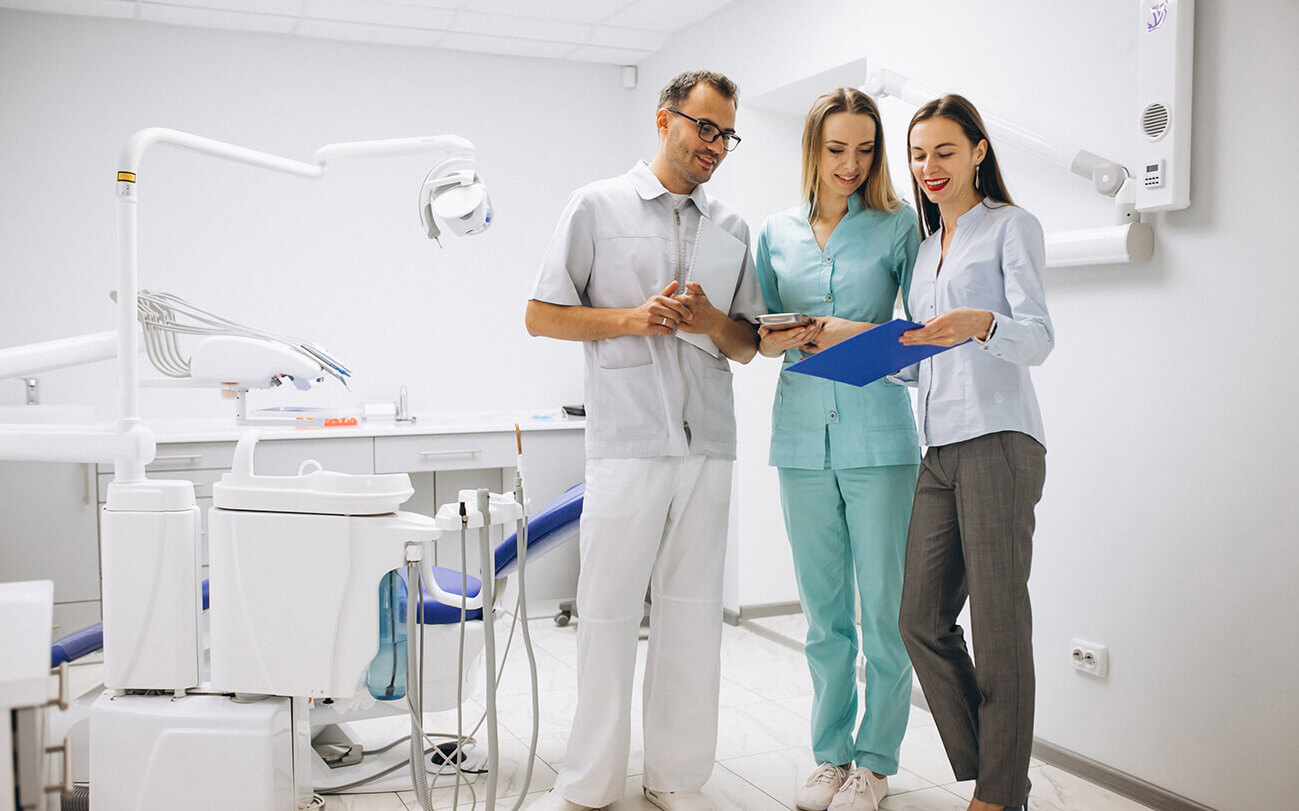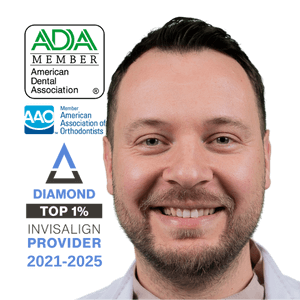İmpacted Canine Tooth Treatment
What is an Impacted Canine Tooth?





Époux, père et voyageur passionné de nature.
Nageur professionnel ; un athlète qui transpose discipline, concentration et détermination dans sa pratique clinique.
Un visionnaire de l’orthodontie nouvelle génération…

Époux, père et voyageur passionné de nature.
Nageur professionnel ; un athlète qui transpose discipline, concentration et détermination dans sa pratique clinique.
Un visionnaire de l’orthodontie nouvelle génération…
What is an Impacted Canine Tooth?
An impacted canine tooth is a canine tooth that fails to erupt into the mouth at the expected time and remains embedded in the jawbone. Typically, after the wisdom teeth, canine teeth are the most frequently impacted. They are twice as common in females as in males and are usually found in the upper jaw.
The issue of impacted canine teeth requires careful treatment. If not addressed early, it can cause significant damage to the dental structure:
A correctly developed canine tooth helps in gripping and biting food and aids in speech. It also supports a full smile due to its position at the corners of the mouth. However, if not properly developed, it can cause problems, leading to impacted canine tooth treatment. Here are the symptoms of an impacted canine tooth:
The causes of impacted canine teeth are a common inquiry among those experiencing this problem. Identifying the source of the issue aids in better treatment. Here are the detailed causes:
An orthodontist can detect impacted canine teeth using periapical x-rays, panoramic x-rays, or cone-beam computed tomography. Early diagnosis is crucial, and the first orthodontic examination is recommended between ages 6 and 7.
An impacted canine tooth cannot erupt naturally. Orthodontic guidance is required to assist in its eruption.
The canine tooth has the longest and strongest root in the body. If an impacted tooth is not treated, its hard enamel can repeatedly impact the soft roots of neighbouring baby and permanent teeth, leading to root resorption and tooth loss. Early treatment can prevent extensive tooth loss and maintain both the impacted tooth and neighbouring teeth.
Early diagnosis and intervention are the most desired approaches for impacted teeth. Without an orthodontic examination, early diagnosis is challenging. Misconceptions like "orthodontic treatments can only be done after ages 12-13" delay treatment. Modern orthodontics rejects this outdated belief, emphasizing the importance of early control. Orthodontic check-ups are recommended annually for primary school children. Treatment methods vary by age group:
Impacted canine tooth surgery is not difficult and is performed under local anaesthesia, ensuring no pain. Post-surgery, maintaining good oral hygiene prevents pain.
The surgery is relatively short, taking about 5 to 45 minutes, depending on the tooth’s position and angle. It is simpler than wisdom tooth extraction.
If not treated timely, the success rate of eruption decreases with age. However, regardless of age or severity, consulting an orthodontist is crucial as there may still be significant benefits.
The duration for erupting an impacted canine tooth varies based on its position and angle. Some teeth can erupt in 2-3 months, while others may take 12-18 months.
Yes, braces can be applied while treating an impacted tooth. This simultaneous treatment reduces overall treatment time.
Teorically yes, but not practical. Unfortunately, clear aligners cannot treat impacted teeth as they require braces to move into position. Braces 4 times faster and more comforable than aligners. Braces acts like automatic eruptor.
The cost of impacted tooth treatment varies based on the tooth’s position and angle. For detailed information, consult Kahraman Orthodontics and Aesthetic Dental Clinic.
Never extract an impacted tooth without orthodontic consultation and approval. If no orthodontic attempt has been made, it is recommended to initiate treatment first.
After extraction, follow your doctor’s advice for wound healing. Avoid hot foods and smoking. Cold compresses are beneficial in the initial hours post-surgery.
Neglecting to extract a medically indicated impacted tooth can lead to root resorption, unwanted tooth movement, and cyst formation.
For more information on impacted canine tooth treatment, follow our Instagram page.
1. Power SM, Short MB. An investigation into the response of palatally displaced canines to the removal of deciduous canines and an assessment of factors contributing to a favourable eruption. Br J Orthod. 1993;20:215–23. [PubMed] [Google Scholar]
2. litsas G. A review of early displaced maxillary canines: Etiology, diagnosis and interceptive treatment. Open Dent J. 2011;5:39–47. [PMC free article] [PubMed] [Google Scholar]
3. Bishara SE. Impacted maxillary canines: A review. Am J Orthod Dentofacial Orthop. 1992;101:159–71. [PubMed] [Google Scholar]
4. Ericson S, Kurol J. Early treatment of palatally erupting maxillary canines by extraction of the primary canines. Eur J Orthod. 1988;10:283–95. [PubMed] [Google Scholar]
5. Mitchell L, editor. An Introduction to Orthodontics. 3rd ed. New York: Oxford University Press; 2007. pp. 147–56. [Google Scholar]
6. Jacoby H. The etiology of maxillary canine impactions. Am J Orthod. 1983;84:125–32. [PubMed] [Google Scholar]
7. Richardson G. A review of impacted permanent maxillary cuspids — diagnosis and prevention. J Can Dent Assoc. 2000;66:497–501. [PubMed] [Google Scholar]
8. Becker A, editor. The orthodontic treatment of impacted teeth. 2nd ed. Abingdon, Oxon, England: Informa Healthcare; 2007. pp. 1–228. [Google Scholar]
9. Peck S, Peck L, Kataja M. The palatally displaced canine as a dental anomaly of genetic origin. Angle Orthod. 1994;64:249–56. [PubMed] [Google Scholar]

Créez votre rendez-vous rapidement en 5 étapes
Votre demande a été reçue. Nous vous contacterons dans les plus brefs délais.